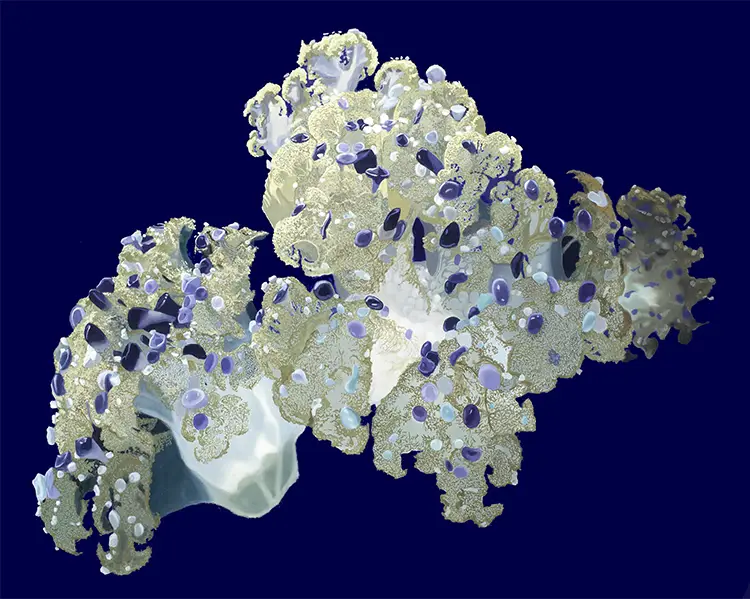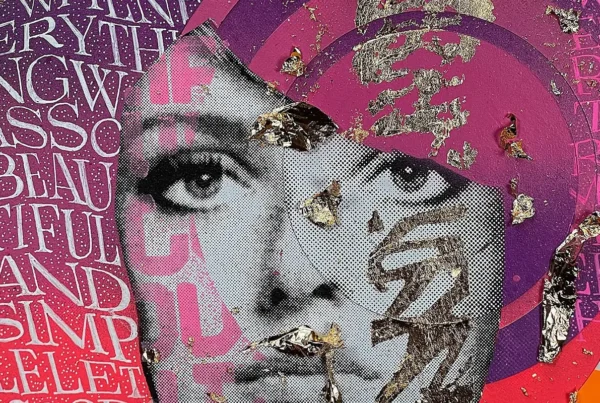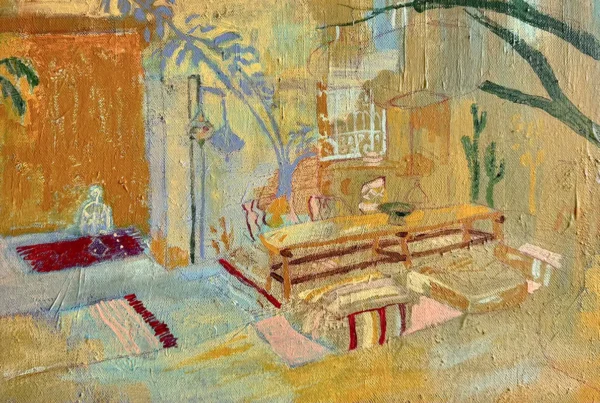“The very meanings we assign to objects to exchange information actually hinder our proper cognition of them.”
Between Observation and Being
In the quiet hours of night, when the city settles into a muted hum and shadows stretch across the streets, Youngil Kim often finds himself in reflective solitude. Based in Korea, Kim walks through the urban landscape after long days of work, imagining the silent lives unfolding behind windows and across empty boulevards. It’s during these solitary walks that a deep sense of detachment and introspection takes hold—an emotional state that has deeply shaped his art. His work emerges not from grand narratives or overt symbolism, but from a careful examination of the tension between individual perception, cognition and the shared external world. He channels this contemplative space to explore what it means to truly see something—or someone—without the filter of assigned meaning.
Kim’s perspective is not shaped by any sudden artistic revelation, but rather a lifelong habit of quiet observation. From an early age, he was drawn to capturing the subtle nuances of the world around him, sketching and noting objects, people, and spaces not for their utility or social significance, but for their unique visual presence. Formal art education later gave him the tools to articulate these experiences, yet the heart of his creative impulse remained rooted in a fascination with the unnoticed and unnamed. By examining the material world through a highly personal lens, Kim avoids the constraints of traditional classification, seeking instead to portray objects as they exist outside of linguistic and cultural frameworks.
What distinguishes Kim’s work is his deliberate decision to strip away the layers of imposed knowledge that typically accompany visual recognition. Rather than identifying subjects by name or fitting them into recognizable categories, he focuses on their innate characteristics: form, surface, repetition, and color. These elements become his primary vocabulary. This practice allows him to question the very act of cognition itself. In doing so, Kim compels viewers to reconsider not just what they are seeing, but how they are conditioned to interpret it. The intention is not to mystify, but to restore a sense of wonder to the ordinary—to invite people to encounter the world, and themselves, as though for the first time.
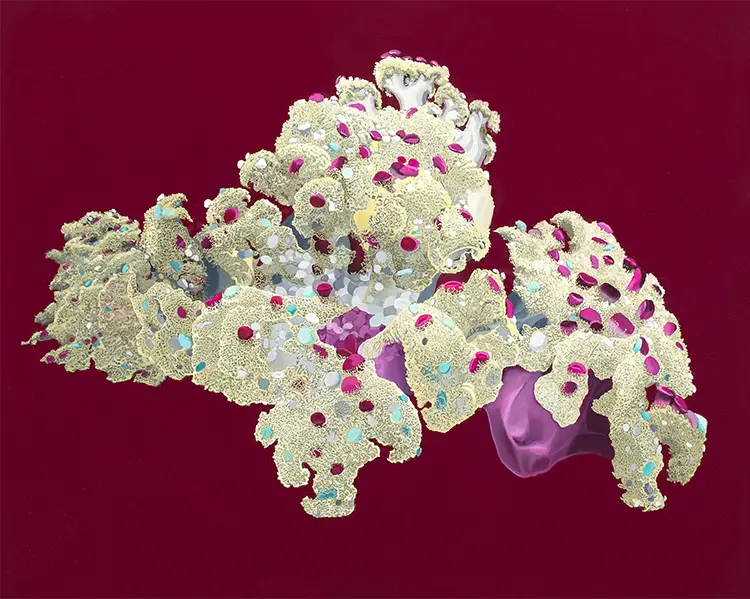
Youngil Kim: Cognition Without Labels
Kim’s artistic language is deeply defined by his resistance to names and taxonomies. His process begins not with a concept but with a visual encounter—an object or form that holds his attention not because of what it is, but because of how it is. Instead of illustrating meaning, he paints the essence of that encounter. The textures, tones, and shapes that emerge on the canvas reflect his belief that naming something is, in many ways, an act of erasure. By categorizing, we limit the possibilities of cognition. His work intentionally avoids the lure of identifiable symbols, focusing instead on the visual features that exist independently of cultural interpretation or verbal description.
This philosophical stance is closely tied to his broader theme: the idea that true understanding arises only when we suspend the labels we instinctively attach to our environment. Kim proposes that the words and values we assign to objects, people, and experiences often obscure more than they reveal. In his view, such constructs act as filters that prevent us from grasping the raw presence of things. Through his art, he invites the audience to practice a form of visual meditation—one that challenges them to engage with what is present, rather than what is familiar or named. This approach, while abstract in concept, is rendered through a visual language that remains grounded and tangible, encouraging deeper attention rather than distancing the viewer.
The theoretical backbone of Kim’s work is not limited to aesthetic philosophy alone. He draws significant influence from two contrasting yet interconnected frameworks: Christianity and physics. The intersection of these belief systems fuels his curiosity about existence, memory, and the invisible forces shaping human life. As a child, moments of awe sparked by both stargazing and spiritual contemplation left a lasting impression on him. These moments didn’t simply become themes—they formed the basis of his approach to artmaking. He reflects on the mysteries of the universe and of faith not with the intent to provide answers, but to suggest that both scientific inquiry and spiritual yearning originate from the same human impulse: to make sense of what cannot be fully seen or understood.
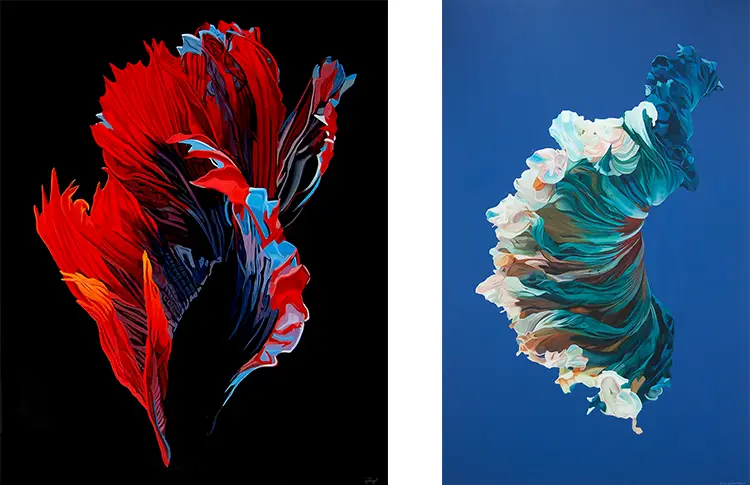
The Quiet Spectacle of “Cognition 1”
Among Kim’s many projects, one work stands out as a defining moment in his artistic evolution. Titled Cognition 1 and created in 2019, this painting marks the beginning of a significant new direction. While it shares the same materials—acrylic and oil paints—as his earlier Forgetting series, its execution and conceptual focus are sharply distinct. Here, Kim began to fully embrace his idea of removing superficial interpretations and reducing the visual field to the features alone. The result is an image that resists immediate understanding. Although he knows the complete form of the creature portrayed, the viewer is left only with fragmented visual cues. This deliberate omission reframes the act of looking as one of questioning rather than knowing.
Kim’s decision not to disclose the subject of Cognition 1 is essential to the piece’s meaning. It is, in fact, a living creature, and yet the painting avoids giving away even the most obvious indicators of species or category. This obscurity is not designed to confuse but to emphasize the limits of recognition. The viewer, unfamiliar with the full shape or context of the creature, must rely entirely on observation. In this way, the painting dismantles the common experience of naming and recognizing, placing emphasis instead on individual visual interaction. What emerges is a subtle critique of how classification systems both aid and hinder our relationship with the world.
Through this work, Kim confronts the paradox of understanding: that in trying to define something, we often obscure what it truly is. He offers the example of the term “monkey,” which serves as both a helpful identifier and a reductive label. Although naming helps organize the world, it also reduces the uniqueness of each being under a broad category. In Cognition 1, the goal is not to redefine the creature, but to ask whether it needs to be defined at all. The painting becomes a quiet rebellion against the idea that something must be known to be significant. By withholding the full image and resisting explanation, Kim challenges viewers to sit with uncertainty and to rediscover the power of pure observation.
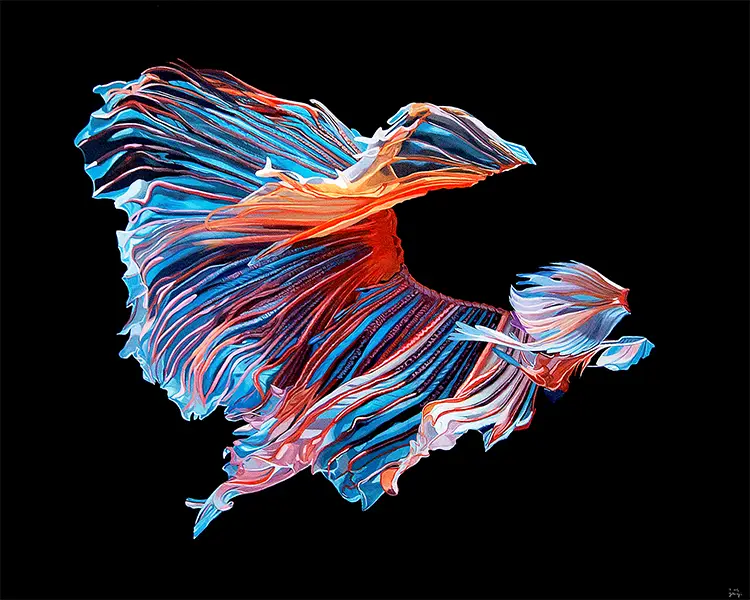
Youngil Kim: Cities, Stars, and the Space Between
Daily life for Kim is shaped by the practical constraints familiar to many working artists. Economic realities in Korea make it difficult to sustain a livelihood solely through art, so he balances his practice with early morning labor that supports his creative pursuits. Despite this, he maintains a consistent studio routine, using his remaining hours each day to paint and reflect. This disciplined approach reveals his commitment to engaging with questions that transcend the immediate pressures of daily survival. His current artistic explorations involve expanding his painted images into sculptural or installation-based works, signaling a new phase where form may take on additional dimensions and invite different modes of interaction.
While Kim’s visual work focuses on the surface characteristics of objects, the ideas behind them extend deep into existential territory. Walking through the city, watching people behind lit apartment windows, and occasionally glancing up at the stars, he often finds himself overcome by the smallness of his own existence. These experiences fuel recurring questions about human value, identity, and origin. Instead of seeking comfort in religious or scientific certainty, he uses these disciplines as frameworks to navigate uncertainty. His process is not about resolving these questions, but about holding them close, using art as a vessel to carry them forward.
The Cognition series stands as a direct response to these lifelong inquiries. In this body of work, Kim merges philosophical musings with scientific frameworks, creating pieces that dwell in the space between the physical and the conceptual. The series invites viewers to consider experiences that are simultaneously intangible and universally felt—concepts such as memory, divinity, mortality, and the essence of existence. These are not themes easily represented, yet Kim attempts to visualize them by linking them to phenomena that resonate across both scientific and spiritual thought. His approach does not offer resolution but rather encourages a reconsideration of what it means to perceive, to know, and to be.
